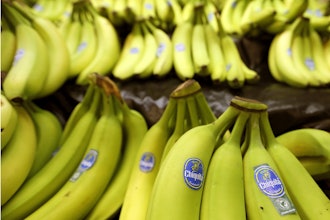About two years ago, when mandatory minimum wage increases seemed like a done deal, many industries looked for ways to cut costs as a way to absorb or deflect the ensuing expenses. The fast food industry was looking to make some changes, and some companies experimented with collaborative robots (cobots). The idea was that a robot could take your order, make your burger, and hand you the bag more efficiently than a human. They could work longer hours, were seldom on their phones, and rarely took smoke breaks.
According to Craig Tomita, Area Sales Manager with cobot manufacturer Universal Robots, interest from the fast food industry has since diminished, because it doesn't make logistical sense to install a robot into an existing burger joint. If the industry moves more towards automation, it will have to rework the entire idea of a fast food restaurant. Tomita says it will look more like a shipping container with a fully automated staff.
While fast food is out of the picture, that doesn't mean that there aren't other opportunities in unexpected industries for cobots to make a significant impact. Here are five that you can expect to see soon.
- Woodworking: Some see woodworking as an art, but collaborative robots could start sneaking into the industry, particularly in sanding applications. Sanding requires a consistent force and the ability to conform to shapes, both ideal scenarios for cobots to take the load off of tired workers.
- Dairies: Robots have already been integrated into some dairy parlors, but the cobots unique play is in applying iodine, or teat spray that sanitizes the cows skin before milking. The cobots can safely operate around the cow and adapt to the situation, because every teat is different.
- Mariculture: Mariculture is the farming of aquatic plants and species. It's used to produce everything from oysters and other mollusks to shrimp in the U.S. Cobots could soon be used in applications such as moving the beds to optimize animal growth.
- Hydroponics: As food grown using hydroponics becomes capable of receiving the certified organic label, cobots can help automate operations, such as harvesting the crop.
- Cannabis: Last but not least, cobots could play a significant role in the cultivation of cannabis, especially as grow operations move out of the elements and into industrial facilities. Cobots may soon be moving grow lights around the plant floor to optimize exposure. They could also be used for trimming and cultivating the crops. The industry did $9 billion in sales in 2017 and recreational use is only legal in nine states. Not a bad industry to get into.
Thank you for your insight Craig, but when will robots be able to roll?
This is IEN Now.





















